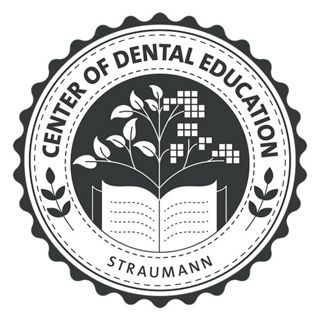Introduction
The introduction of dental implants for the replacement of missing teeth disrupted the era of dental prosthetic dentistry by providing the possibility of replacing a missing tooth with a fixed restoration without the need to involve the adjacent teeth to perform a dental-supported restoration. During the beginning of the era of implant dentistry, two-stage procedures were followed with a waiting period of three to six months from the day of the surgery to the loading [1].
The attempts to provide a better patient experience have led to the development of improved manufacturing technology, innovative techniques, and a better understanding of biologics by clinical and pre-clinical studies. The immediate loading of implants is now a reality, and these treatments are frequently used in the anterior maxillary area. However, the installation of dental implants simultaneously with provisional restoration can also provide benefits in the posterior areas with a reduction in time prior to the recovery of the masticatory function [1].
In this context, the estimation of the risk of the treatment result and an effective treatment planning is crucial. It is essential to perform an analysis of the patient’s medical condition, bone availability, soft tissue, and desired tooth shape, and also to take into consideration the patient’s needs and expectations.
The following case report describes the replacement of a single upper molar with the Straumann® TLX implant in a fully healed site (Type 4, ITI implant placement) and the immediate rehabilitation with a provisional restoration.
Initial situation
A healthy, non-smoker 40-year-old female patient presented to our clinic with a missing maxillary molar. Her primary goal was to recover the masticatory function as soon as possible because her condition did not allow her to eat properly and was affecting her quality of life. Her dental history revealed that the tooth was lost due to a vertical fracture a couple of months before. Since this incident happened during the Covid-19 lockdown, she was not able to receive the complete treatment of the site.
The intraoral examination showed the lack of the upper right first molar. The patient’s periodontal condition was healthy, and the oral hygiene was classified as good (Figs. 1,2).
The pre-operative CBCT revealed sufficient vertical and horizontal availability for an implant placement on site #16 with no risk of damage to surrounding anatomic structures (Fig. 3).
Treatment planning
Prosthetic-driven planning and close communication between the patient, the prosthodontist (Dr. Cristiane Juchem), and the dental technician (Lisiane Merlin) was ensured.
After discussing with the patient various treatment options, the patient opted for implant placement and provisional restoration on position #16. The clinical and radiographic evaluation showed adequate conditions for implant placement in the healed site. Furthermore, the CBCT for diagnosis revealed no need for bone augmentation procedures. Therefore, a Straumann® TLX RT SP (Standard Plus) Roxolid® SLActive® 3.75 x 10 mm with immediate provisionalization was planned only if the desired primary stability was achieved. The Straumann® TLX Implant System offers fully tapered tissue level implants (TLX) that are designed for high primary stability and immediate treatment procedures.
Surgical procedure
Local anesthesia was infiltrated using articaine (4%) with epinephrine. Mid-crestal and intrasulcular incisions were performed without a vertical release. The flap was raised to expose the bone in the area of tooth #16 (Fig. 4).
Following the manufacturer’s surgical protocol, a Straumann® TLX RT SP (Standard Plus) Roxolid® 3.75 x 10 mm was placed in a prosthetically driven position. A minimum distance of 1.5 mm from the implant shoulder to the adjacent tooth was taken into consideration.
Due to the self-cutting properties of the TLX Implant, the implant bed was lightly underprepared. The drills were used in a clockwise drill rotation direction and with an intermittent drilling technique with pre-cooled (5 °C, 41 °F) sterile saline solution.
To this end, the needle drill ∅ 1.6 mm was used initially to mark the implant site, followed by the pilot drill (∅ 2.2 mm) used to full implant length (10 mm.) (Fig. 5).
Next, the bone density was determined through a pilot hole, and the drill # 2 (∅ 2.8 mm) was used (Fig. 6). Afterwards, an alignment pin was placed to check the 3D position of the osteotomy and preparation depth (Figs. 7,8). Additionally, since the placement of the implant was planned to be deeper than the shoulder mark on the mesial site, the corresponding profile drill was used (Fig. 9).

A Center of Dental Education (CoDE) is part of a group of independent dental centers all over the world that offer excellence in oral healthcare by providing the most advanced treatment procedures based on the best available literature and the latest technology. CoDEs are where science meets practice in a real-world clinical environment.
Prosthetic procedure
Since optimal primary stability was achieved, we could proceed with the preparation of the provisional restoration as requested initially by the patient.
For the provisionalization, a straight provisional titanium abutment and a pre-selected tooth based on the stone cast were used (Figs. 13-18). The provisional titanium abutment was reduced with a carborundum disc to avoid occlusal contact with the antagonist. The pre-selected tooth was prepared to be adapted to the abutment and bonded with flow composite. The final contouring and polishing were done chairside by Dr. Cristiane Juchem.
Single stitches with nylon 5-0 were placed around the implant. Analgesics were prescribed post-operatively, and a control and suture removal was planned one week later. The follow-up appointments were scheduled for 30- and 60-days post-surgery (Figs. 19,20).
After two months of healing, a monotype scan body was screwed into the implant, and a digital impression was taken with the Straumann® Virtuo Vivo™ intraoral scanner (Figs. 21,22).
The coDiagnostiX® software was used for CAD processing, and a metal-free restoration (zirconia) was cemented (Relyx™ U200- 3M) on the top of the Variobase® (RT Variobase, ⌀ 5 mm, AH 6 mm) for screw-retained rehabilitation. The height of the abutment was adjusted accordingly from AH 6 mm to AH 4 mm (Figs. 23-26).
Finally, the screw access hole was sealed with composite material (Fig. 29).
The patient was scheduled for regular follow-up visits and, at the five-year follow up, the prosthetic restoration continued to function effectively without any complications related to the implant or abutment. The soft tissues remained healthy, and the occlusion was well-aligned. The patient reported high satisfaction with both the functional and esthetic outcomes, highlighting the long-term success and stability of the treatment (Figs. 30-32).
Treatment outcomes
Replacing one tooth in the posterior zone and loading it immediately can pose many challenges. Since the key is to identify who is eligible for this type of treatment, patient selection is crucial. In this case, we obtained good and predictable results in a short period of time as requested by the patient. The Straumann® TLX allows the implant to be loaded immediately, which in our case brought high satisfaction in terms of health, esthetics, and function.
Author’s testimonial
My experience with TLX has been amazing. I’m a big fan of Tissue Level implants for the posterior region, because of all the benefits of this renowned design and the absence of the connection at bone level, also reported in the scientific literature. Allied to these advantages of the Tissue Level, we can now achieve better primary stability and greater confidence in immediate protocols with the TLX. I therefore believe that the body design and the predictability of the connection at the tissue level will be groundbreaking.
